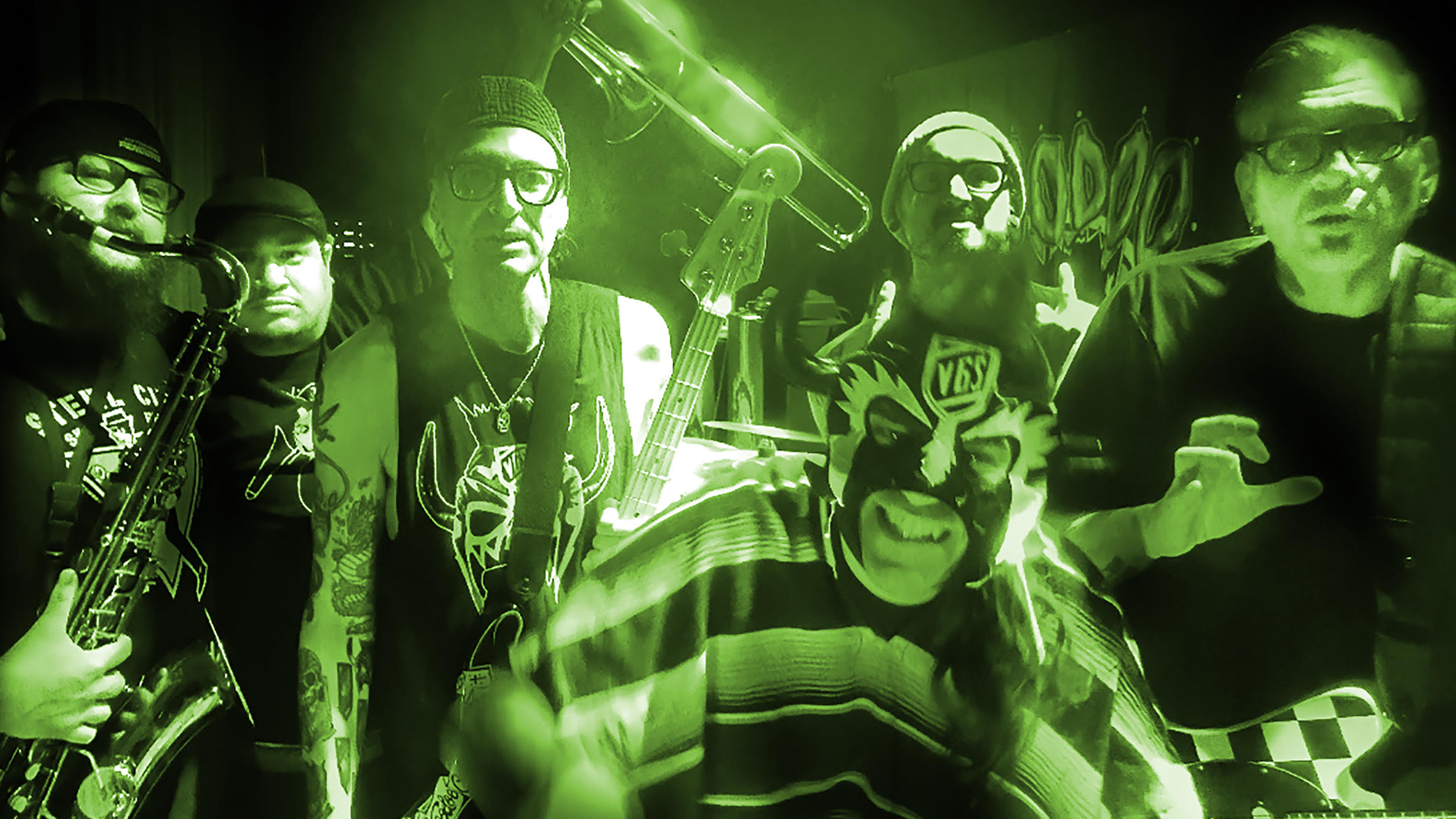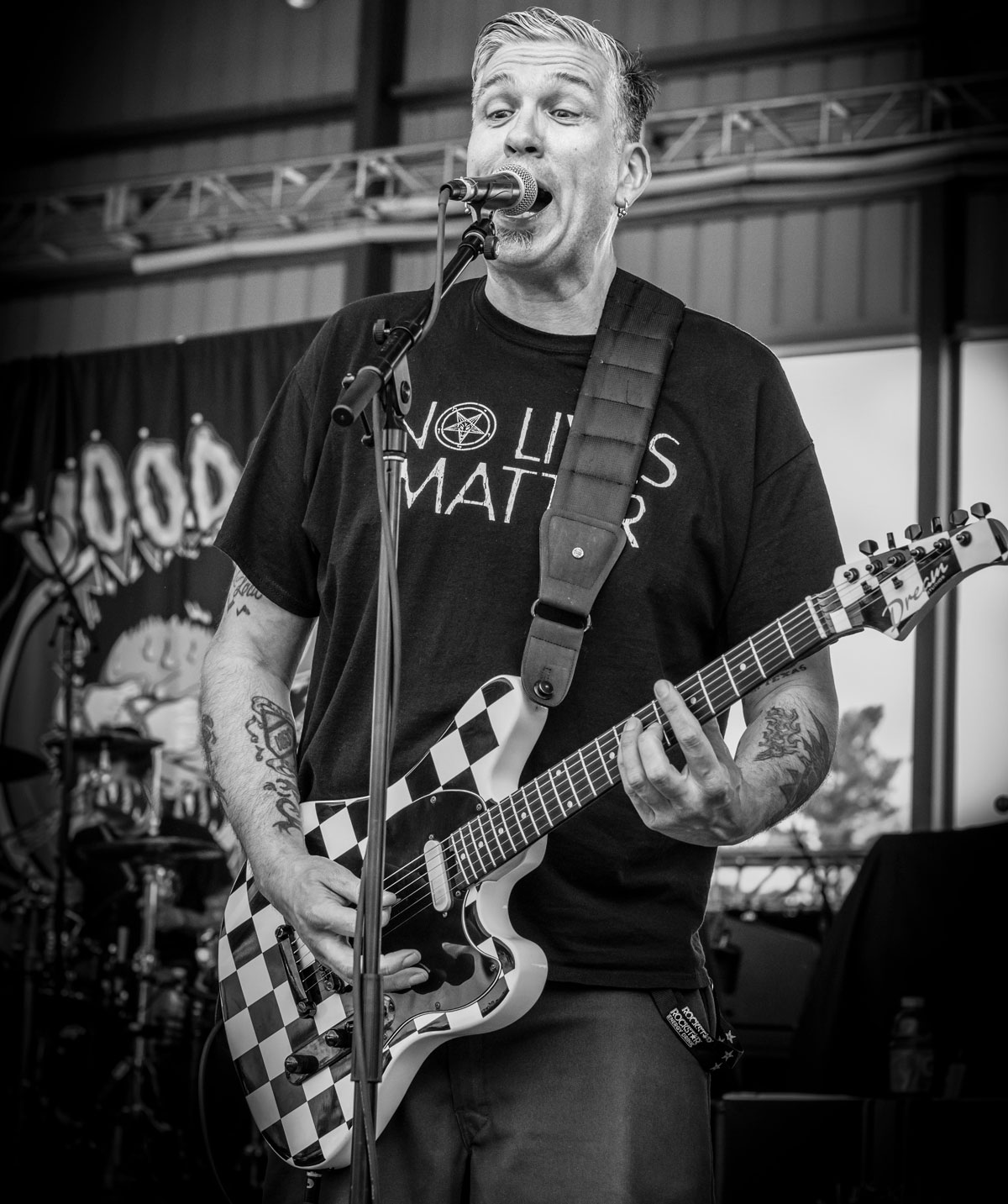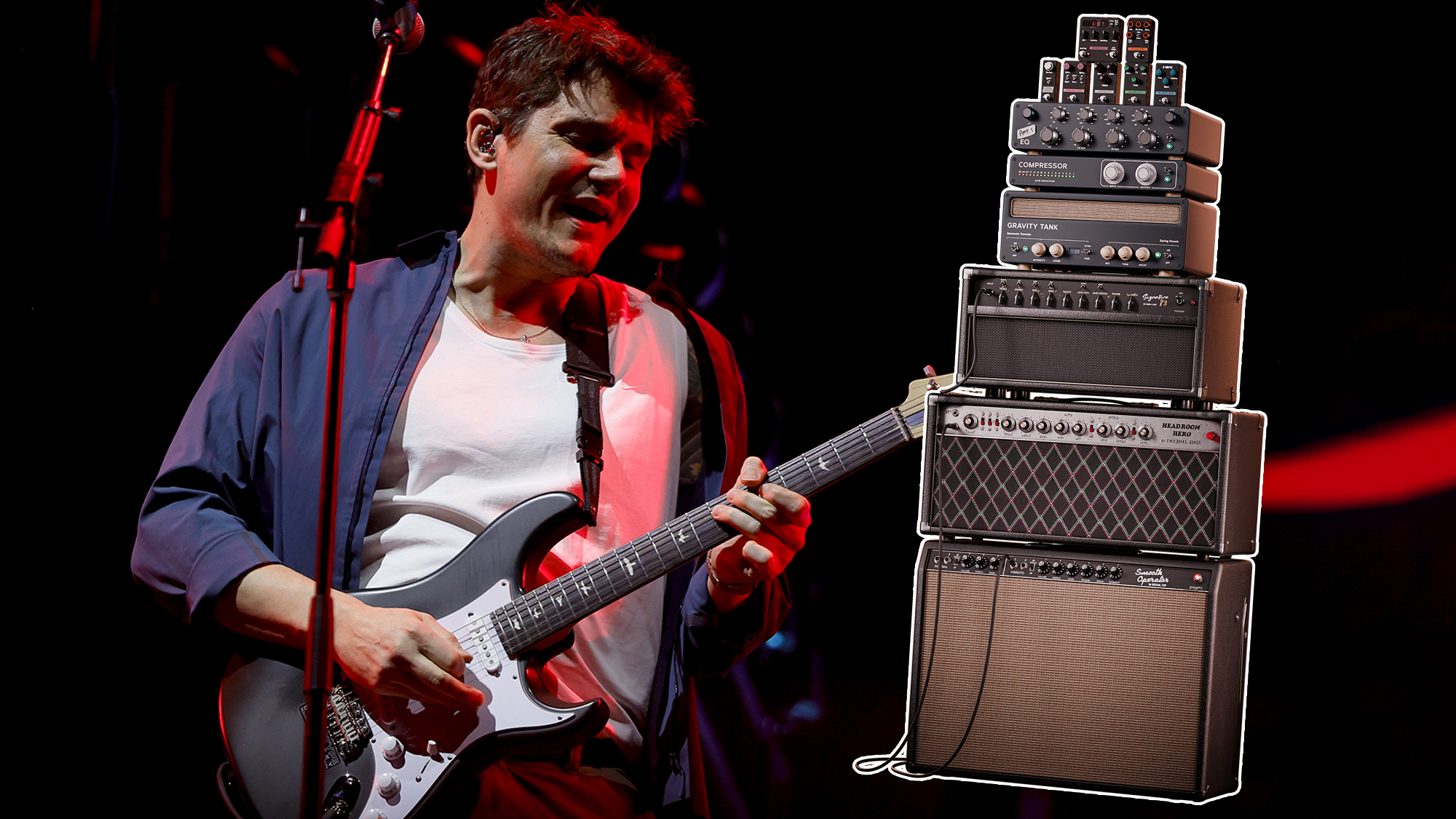Voodoo Glow Skulls' Eddie Casillas: “This record is the most ska we've ever been – we've never had clean guitar tones on any of our albums before this”
Nine years after their last album – and one vocalist later – the Riverside, CA outfit take aim at a host of topical issues with new ska-heavy effort, Livin' the Apocalypse

The world has gone through some serious changes, to say the least, since Riverside, CA ska-core hybridists Voodoo Glow Skulls released their last album, Break the Spell, in 2012.
For one, it was the last project of theirs to feature founding vocalist Frank Casillas – older brother to guitarist Eddie and bassist Jorge – who left the project in 2017.
Given the zeitgeist-tapping title of Livin’ the Apocalypse, the group’s upcoming 10th full-length – and first with Death by Stereo vocalist Efrem Schulz on the mic – also hints at the recent Trump years (Make America Skank Again), the ongoing battle against systemic racism (The Karen Song) and the current existential malaise brought on by the COVID-19 pandemic (The Walking Dread).
Since forming the band in 1988, principal songwriter Eddie Casillas has had a knack for mashing plucky two-tone ska riffs with the hyper-speed approach of California skate punk and the chops of ‘80s metal.
Livin’ the Apocalypse lovingly co-mingles all three, and more, but likewise finds the guitarist drilling even deeper into each subgenre. Take the crystalline plinking of Casillas’ newfound clean tone – a first for the band’s high-gain discography – or how the closing The Walking Dread morphs from an eerie ska groove towards a backhalf swing of juddering heavy metal.
Fittingly, Luchador-masked vocalist Schulz tags out to bring Lamb of God frontman Randy Blythe in for a howl-heavy guest spot before Casillas caps the record with a blizzard of tap theatrics.
“That’s the part in the song where it’s like, ‘Whoa, these guys turned it into a whole different band here.’ That was on purpose, of course” Casillas says with a laugh, while hinting at an even heavier future for his Voodoo Glow Skulls.
All the latest guitar news, interviews, lessons, reviews, deals and more, direct to your inbox!
“I have some demos right now that are in that style, [but] knowing us, we’re going to take them apart and make it sound like ‘us’.”

It’s been nine years since Break the Spell, and four years since Frank left the band and Efrem came in. How big of a stockpile of songs had you built up before tracking Livin’ the Apocalypse?
Eddie Casillas: “I actually started demoing probably around five or six years ago. That was when I discovered the drum machine programs that were built into Pro Tools; I’d never [demoed that way] before.
“Right around the time we had five or 10 songs was when all the drama went down and my brother decided to leave the band, without warning. It took us a while to see if we were going to move on with a different singer, [then] we went on the road [with Efrem] to see if it was going to stick.
“When the pandemic hit, I revisited the leftover demos that I thought were worthy... we used three for the new record. We kept those, and started to write fresh about a month or two into 2020. We were like, ‘The world is going to be closed for a year or two, so let’s finally finish this record, make a mark with this lineup of the band.’”
Which were the older songs?
“Make America Skank Again, Generation Genocide, and Rise Up. Actually, we’ve had the music for Story at 11 for about 10 years. I’ve had that song in my back pocket, but it never really seemed to work [until now].”
We were like, ‘the world is going to be closed for a year or two, so let’s finally finish this record, make a mark with this lineup of the band’
In terms of the pace, that’s the speediest of the songs...
“It starts off kind of funky, and then it gets to the hardcore part, almost like a Suicidal Tendencies skate-thrash kind of thing. That’s been our forte. I’m glad that it worked with the theme of the album. We’re singing about all the stuff that happened [over] the last four or five years – It kind of ends on the pandemic.”
That song, The Walking Dread, also ends the record on a more pronounced metal edge. As you noted, metal and hardcore have always been a part of Voodoo Glow Skulls’ sound – you started [1993 debut album] Who Is, This is? with a Crazy Train homage, for instance. Did you hone that metal side of your playing before jumping into ska?
“We’re not exactly like the Reel Big Fishes of the world, but we’re still considered a third-wave bastardization of the ska scene. I was 17 [when the band formed] in 1988. We were already influenced by Fishbone, the Specials, the Selecter, and Madness, but also the Chili Peppers.
“The Hollywood Trifecta back then was Fishbone, Red Hot Chili Peppers, and Jane’s Addiction. We had that going on, trying to play funky, but also had horns and liked ska a lot. We didn’t know which way to go. We liked it all!
“Getting back to the main question, my first love was heavy metal. We grew up on that; I went straight [towards] the dual guitars of Scorpions and Iron Maiden. When we got to adolescence, playing in our first high school bands, we were geared up to play this kind of mixed-up, weird version of all that music. That’s just the way it came out.”
The Walking Dread does mix in all those elements: punk, some doomy ska, the double-handed tapping solo that closes the record...
“We ended up getting Randy [Blythe] from Lamb of God to do that guest vocal spot, which blew us away. He’s a punk-rock fan. He posted one of our songs on his Instagram, I believe, and we all saw it and tagged each other, like, ‘Oh my god, this guy knows us!’ I’m a fan of that dude, too.
“I’m a heavy metal guy, and I love [Lamb of God’s] dual guitar stuff. They’re like a newer version of the bands I liked: Iron Maiden, Slayer, all that stuff. We asked him to do the song – we DM’d him – and he said yes right away.
“Going back to the whole lead thing, we had been trying to go even harder with the hard stuff, but if you noticed, it’s also more of a ska record. It’s the most ska we’ve ever been! There have never been clean guitar tones on any official Voodoo album [prior to this]; it’s always been distorted, crunchy guitars. I just cleaned up my tone to get that clanky little ska sound, you know?”
How did you achieve that tone?
“I have a home studio that’s pretty well-equipped now. I’ve always been a high-gain guy, so right now my current setup is an old school Peavey 5150 from 1992. I think I bought one of the first runs. I’ve changed it up over the years, but I’m back to the 5150 for all the high-gain stuff.
“I also do a semi-clean tone with that same head, but back off the gain and run it through my Trident console EQ into a really nice compressor to get that skanky spank to it.
This is the most ska we’ve ever been! There have never been clean guitar tones on any official Voodoo album prior to this; it’s always been distorted, crunchy guitars
“For the clean I would use virtual amps going into the Trident console. I actually used the Steven Slate plugins – I used his amp plugins for a Soldano and a Fender Bassman, and it worked great.”
How did you end up playing Dream Studios guitars?
“My older brother has been involved in the BMX racing world for years, and he introduced me to Bill Ryan, who is the owner/CEO of Supercross BMX. He makes frames and forks, one of the biggest in the game.
“He also started a guitar company about seven years ago, and I was pretty much the first endorsement. He gave me a guitar to start with and he’s built me three or four guitars since then. They’re pretty much up to spec with the Fender Customs that I played before that.”
Do you switch between those three or four on the record?
“I guess there’s no name for the model because it was kind of a one-off, but my main one is like a hybrid between a Tele and an Explorer. It looks like a Tele, but kind of warped. It’s equipped with Seymour Duncan Blackouts, which are the active pickups. Same vibe as the [EMG] 81s, just made for crunchy tones.
“I also used one of his models called the Young, basically based off an Angus Young-style SG. That has Seymour Duncan JB pickups in the bridge. It’s cleaner, more like a Les Paul. Not quite as dirty. I used that guitar for the cleaner stuff; it suited that more.”

There are another pair of leads on the record in Livin’ the Apocalypse and The Karen Song. The latter is interesting in that there’s a shred solo masked by this fake phone call of a 'Karen' calling the police.
“We dropped the sample in there, but it sounded like it needed something else. We were going to put some cop sirens in... but more leads is always cool to me! I thought it would be cool to do a solo in the vein of Slash. That’s me trying to give it that funky wah-wah, like Slash doing a solo on a Michael Jackson song, or something. That’s the vibe. The guy that mixed the album had it pretty loud in the mix at first, but it’s supposed to be buried.
“If I could add, too, the lead on Livin’ the Apocalypse is Dan Palmer from the band Zebrahead – he’s also the lead guitarist in Death by Stereo, which is Efrem’s main band.
“That guy always has his Van Halen guitar with him – the one with the stripes, the Explorer-shaped one. He has one in his trunk because he’s always going to sessions. He came in to watch us do the vocals that day, and it just came up [for him] to do a lead. It was cool and we’ve had guests before – we had The Reverend Horton Heat do a lead on our Symbolic record from 2000.
“Dan’s a shredder, an amazing guitar player. [We knew that] if the vibe was right and it sounded good, it would work. He did such a great lead, one that I can play pretty well, too. He’s so good that that I might’ve had to work to cop his style, but he did the right tasteful lead for our band.”
- Livin' the Apocalypse is out now via Dr. Strange/Go Loco Records.
Gregory Adams is a Vancouver-based arts reporter. From metal legends to emerging pop icons to the best of the basement circuit, he’s interviewed musicians across countless genres for nearly two decades, most recently with Guitar World, Bass Player, Revolver, and more – as well as through his independent newsletter, Gut Feeling. This all still blows his mind. He’s a guitar player, generally bouncing hardcore riffs off his ’52 Tele reissue and a dinged-up SG.


